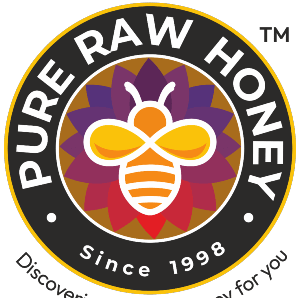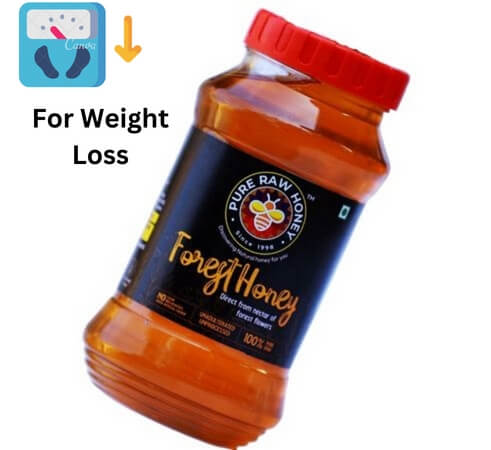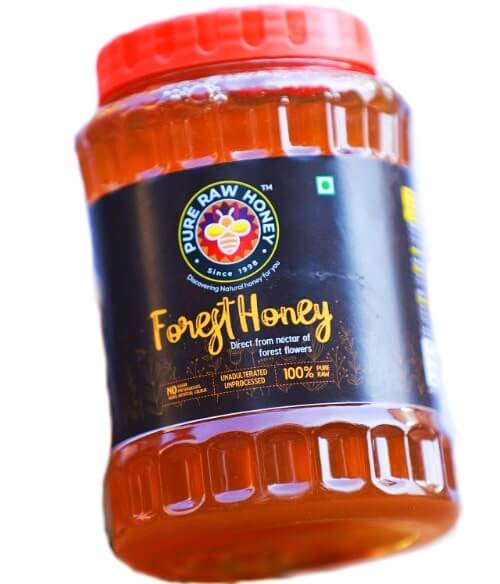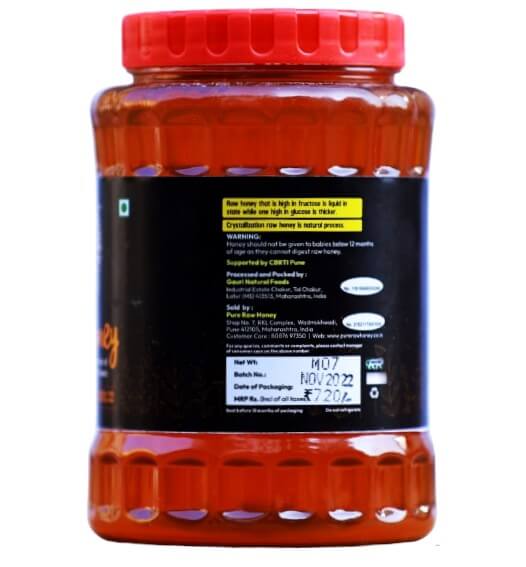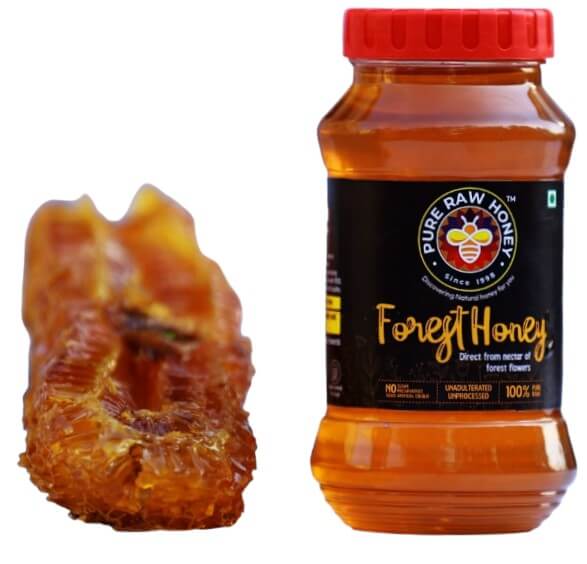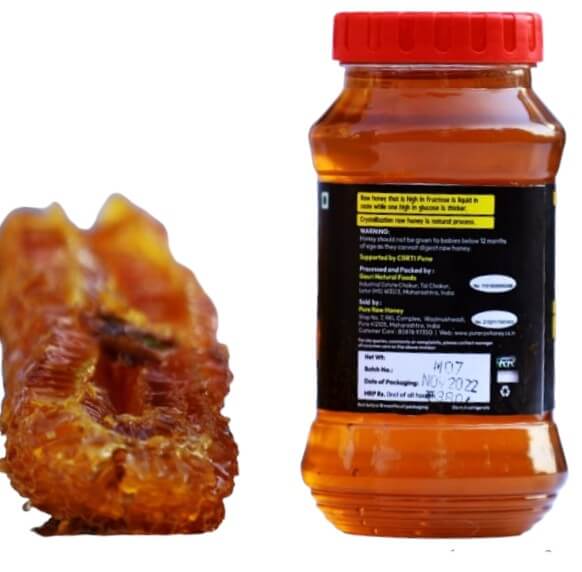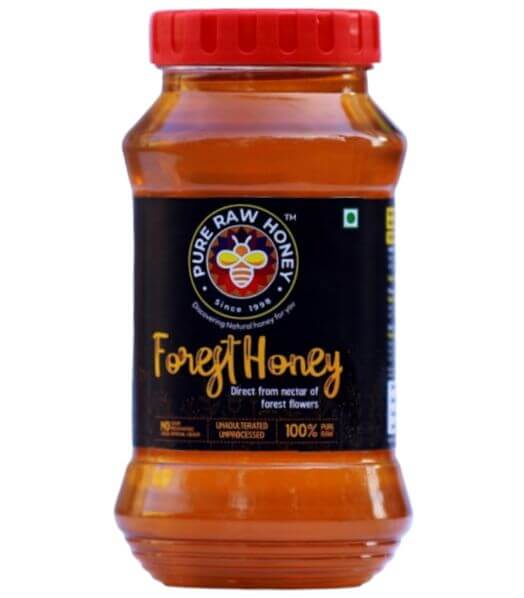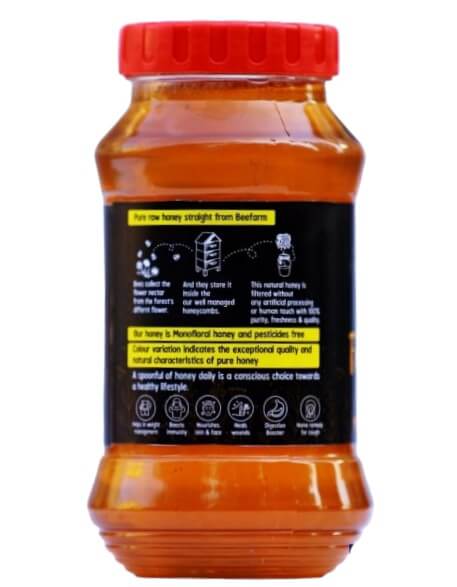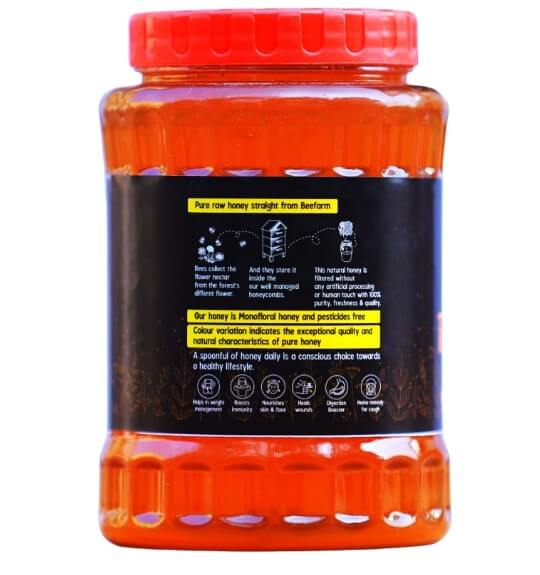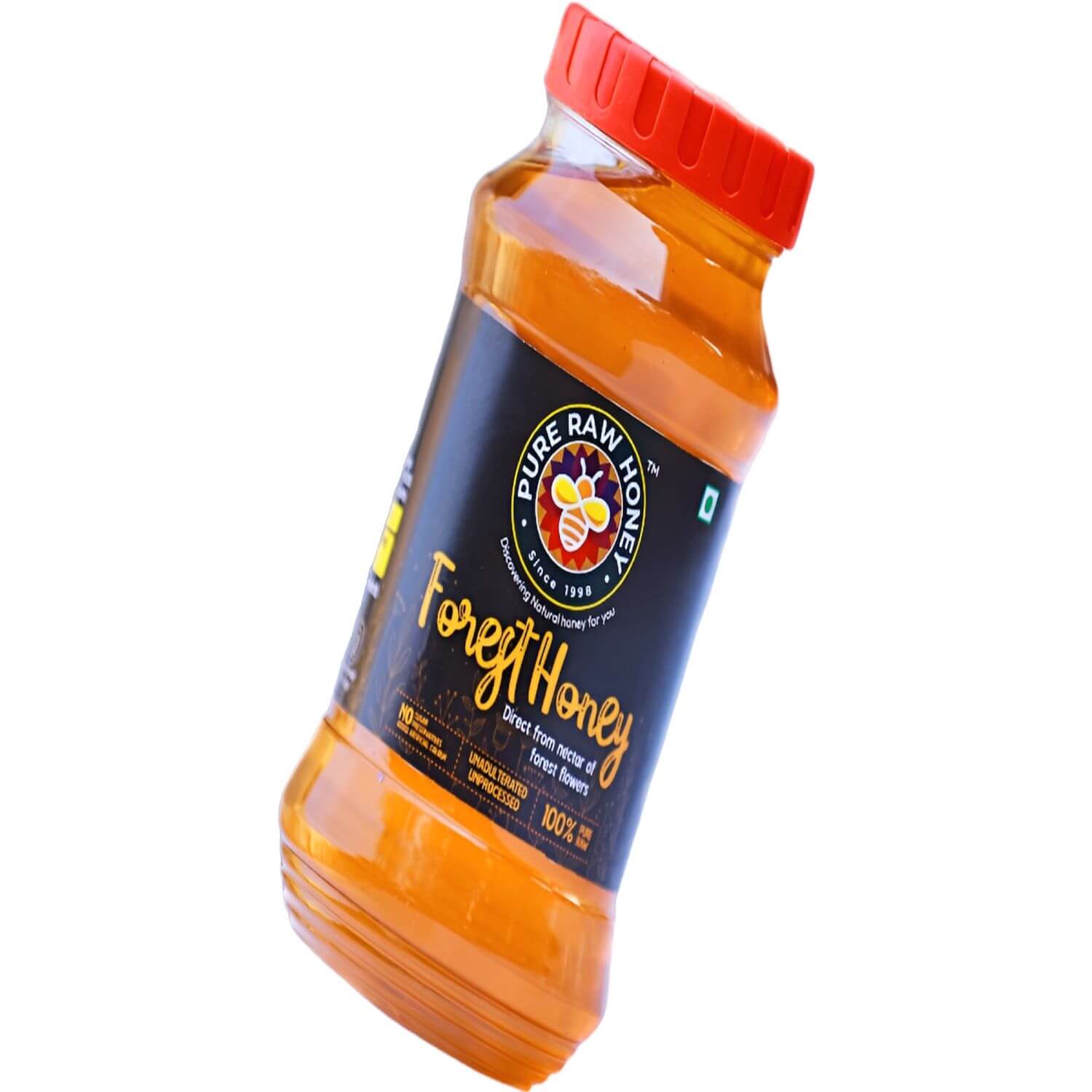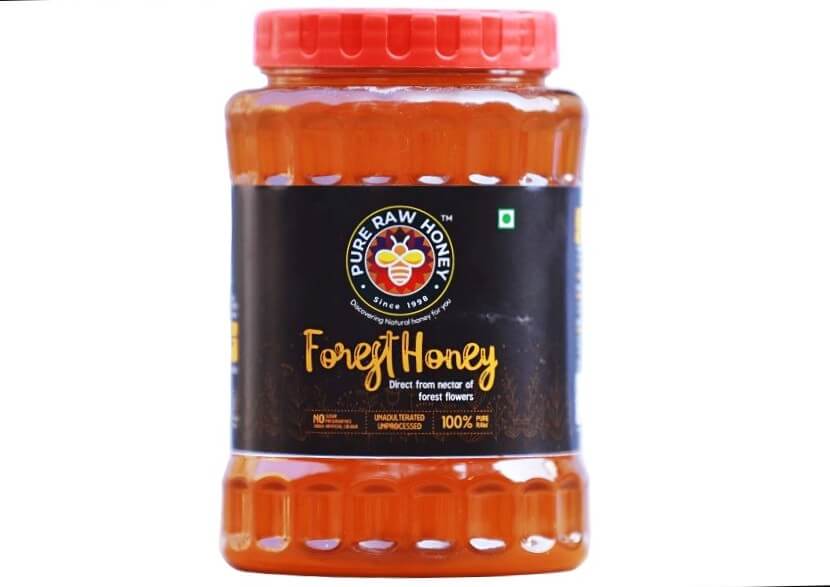Description
At Pure Raw Honey travels across India to different states based on the flower blossoms of that region to find the best organic honey for you. In Kashmir and the Himachal Pradesh valley region, wild forest honey is collected from forest flower blossoms. Depending on the flowers foraged by the bees, monofloral or polyfloral honey has a distinct aroma and flavour.
You should be aware of the following properties of raw forest honey:
Crystallization: Because it has a slower crystallization rate, honey takes longer to convert into solid natural sugar.
It has a pleasant taste.
Honey can be light yellow, dark yellow, or dark brown, depending on the flower’s nectar and colour.
Honey that is antibiotic-free
Honey with multiple flowers
Health Benefits of Honey:
Weight Loss
Reduces cold & cough
Reduces Heart and blood vessels
related problems.
Reduces wound healing.
How will we accomplish this? or the method beekeepers use to collect natural honey
Steps 1-First, a knowledgeable beekeeper from the Pure Raw Honey team goes to survey the flower nectar.
Step 2: Once we determine that enough nectar is available to collect raw honey, we transport our bee boxes to the survey area, also known as the bee farm setup.
Step 3: Position the bee boxes in an area with abundant spring wildflowers that carpet the hillsides, allowing worker bees to collect nectar from nearby wild flowers.
Step 4: Bees produce natural honey that is sealed in bee-boxes or honeycomb that is sealed inside bee-boxes.
Step 5: Sealed honeycomb honey extraction.
HOW DO BEES MAKE HONEY? or What is Bees Honey?
Nectar — a sugary liquid — is extracted from flowers using a bee’s long, tube-shaped tongue and stored in its extra stomach, or “crop.” While sloshing around in the crop, the nectar mixes with enzymes that transform its chemical composition and pH, making it more suitable for long-term storage.
When a honeybee returns to the hive, it passes the nectar to another bee by regurgitating the liquid into the other bee’s mouth. This regurgitation process is repeated until the partially digested nectar is finally deposited into a honeycomb.
Once in the comb, nectar is still a viscous liquid — nothing like the thick honey you use at the breakfast table. To get all that extra water out of their honey, bees set to work fanning the honeycomb with their wings in an effort to speed up the process of evaporation.
When most of the water has evaporated from the honeycomb, the bee seals the comb with a secretion of liquid from its abdomen, which eventually hardens into beeswax. Away from air and water, honey can be stored indefinitely, providing bees with the perfect food source for cold winter months.
But bees aren’t the only ones with a sweet tooth. Humans, bears, badgers and other animals have long been raiding the winter stores of their winged friends to harvest honey.
In fact, until sugar became widely available in the sixteenth century, honey was the world’s principal sweetener, with ancient Greece and Sicily among the best-known historical centers of honey production.
More About Raw Honey:
- We conserve honey bees in scientifically designed wooden boxes called honey beehives. These boxes (beehives) are designed as like honeybees home.
- Honeybees collect nectar from flowers and produce honey. Honey obtained from honey bees, which is highly nutritious and loaded with numerous medicinal properties. It contains all naturally occurring antioxidants, pollen, enzymes, vitamins, and natural minerals. We guarantee that no value is taken out and cane sugar, corn sugar or anything ever added in our raw honey.
- The latest method and techniques are used to perform the extraction process of raw honey from the Sealed honey comb, so honey bees does not hurt and we also get the best raw honey.
Each jar of Raw Forest honey from Pure Raw Honey has the essence and the goodness of a different types of thousand flowers in it.
